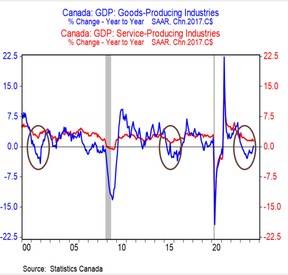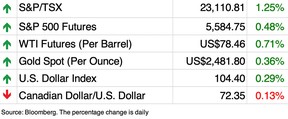Not only will the economy slow, Canada’s deficit and debt will rise, says report
Article content

The Federal government’s move to rein in the entry of temporary residents to Canada could have more of an impact than we thought.
Ottawa wants to reduce the number of non-permanent residents to 5 per cent of the total population over the next three years.
Immigration has fuelled explosive population growth in Canada since the pandemic, raising concerns about whether the infrastructure, particularly housing, could handle it.
Advertisement 2
Article content
However, there’s also a negative flip-side to slowing the numbers.
If Ottawa is successful, it will have an impact not only on economic growth, but also on the country’s deficit and debt, says Randall Bartlett, senior director of Canadian economics at Fédération des caisses Desjardins du Québec.
The plan to limit non-permanent residents will slow growth in the working-age population, which in turn will slow growth in real gross domestic product.
“A slower pace of real GDP growth and inflation means that growth in nominal GDP — the broadest measure of the tax base — will be lower as well,” said Bartlett.
Yet the Federal Budget 2024 assumes high population growth in the next few years and doesn’t explicitly incorporate the planned reduction in non-permanent residents, suggesting risks to its real GDP forecast, he said.
Fewer non-permanent residents means lower revenues which could lead to larger deficits and higher debt.
“Indeed, the federal debt-to-GDP ratio could end the next five years at a higher level than in Budget 2024’s downside scenario,” said the economist.
Article content
Advertisement 3
Article content
When Desjardins applies the lower population growth forecast recently provided by Statistics Canada, the deficit swells nearly $8 billion a year higher than the Budget’s baseline.
“Of course, offsetting savings could be found by reducing spending. But this could be easier said than done,” said Bartlett.
The government recently pledged to increase defence spending to the NATO target of 2 per cent of GDP by 2032. Even if the rise is gradual, the new spending would add about 0.2 per cent of GDP to the deficit every fiscal year after 2025-26, he said.
Lower revenues and additional spending not included in Budget 2024, put the federal government’s fiscal anchors “very much at risk.”
Sign up here to get Posthaste delivered straight to your inbox.


The Canadian economy actually beat expectations in May, data out yesterday showed. Gross domestic product (GDP), rose by 0.2 per cent in May after a 0.3 per cent increase in April, according to Statistics Canada, putting the second quarter on track for annualized growth of 2.2 per cent.
Douglas Porter, chief economist of BMO Capital Markets, who brings us today’s chart, says this most recent downturn has been similar to the “near-recession-misses in the early 2000s (tech wreck) and 2015-16 (oil price collapse).”
Advertisement 4
Article content
“In all three cases, goods industries weakened, but didn’t plunge, and the services sectors managed to keep growing, just helping to avoid a full-on recession,” he said.

- Today’s Data: United States non-farm productivity, construction spending and ISM manufacturing
- Earnings: BCE Inc., Thomson Reuters, TC Energy Corp., Brookfield Infrastructure Partners, Glidan Activewear Inc, Amazon.com, Apple Inc.



Recommended from Editorial
-

Bank of Canada doubts Trudeau’s pledge to slow immigration
-

How moving populations are reshaping real estate

It’s still another five weeks or so until classes resume, but veteran investor Peter Hodson is taking us back to school — investing school, that is. He offers five rules we would do well to follow if we want to have success in the stock market in the long run.
Are you worried about having enough for retirement? Do you need to adjust your portfolio? Are you wondering how to make ends meet? Drop us a line with your contact info and the gist of your problem and we’ll try to find some experts to help you out, while writing a Family Finance story about it (we’ll keep your name out of it, of course). If you have a simpler question, the crack team at FP Answers, led by Julie Cazzin, can give it a shot.
Advertisement 5
Article content
McLister on mortgages
Want to learn more about mortgages? Mortgage strategist Robert McLister’s Financial Post column can help navigate the complex sector, from the latest trends to financing opportunities you won’t want to miss. Plus check his mortgage rate page for Canada’s lowest national mortgage rates, updated daily.
Today’s Posthaste was written by Pamela Heaven, with additional reporting from Financial Post staff, The Canadian Press and Bloomberg.
Have a story idea, pitch, embargoed report, or a suggestion for this newsletter? Email us at posthaste@postmedia.com.
Bookmark our website and support our journalism: Don’t miss the business news you need to know — add financialpost.com to your bookmarks and sign up for our newsletters here.
Article content
Canada’s immigration clampdown could raise deficit, debt
2024-08-01 11:59:23






